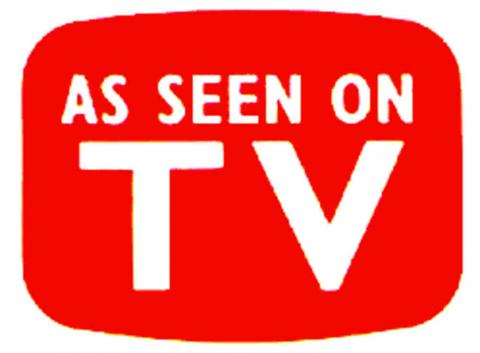This Week on Flow (13 May 2005)
by: Russell Haight / FLOW Staff

This Issue on Flow
This issue of Flow launches during a time when television, when it, when–well, I don’t know. I wish I had a pithy one-liner about the state of television over the last two weeks–about an omitted news event, about where it lies in its seasonal development, or about the new confessional Whattaburger commercial–but I don’t. The reason? When I turn on the television I watch the stuff that doesn’t count: infomercials, home shopping channels, and late-night dating programs; those shows that live in the margins where TV’s flow turns viscous. Ron Popeil is my Paris Hilton, Roger Lodge my Oprah, and Jack Van Impe, that apocalyptic visionary, my Peter Jennings.
Last year the purchase of my first television and an erratic sleep schedule begat my interest in the night-owl world of coin collections and super vitamins. I remember thinking that by watching such garbage guiltlessly I had failed my entrance exam to the academic world of media studies, an unremittingly “leftist” world of angry media reform cheerleaders. Hey, I’m angry too. And on the left. And I dressed as a cheerleader one Halloween. But when it comes to television I threw in the towel (er, pom-pom) long ago. TV owes me nothing; TV is not a source of information; TV does not resemble the world. Nihilistic? Probably. Apathetic? Probably that too. Not that I’m apolitical, just that I’m not going to look to Friends or 48 Hours as my political battleground. Perhaps because I grew up in the 80s I never experienced the democratizing potential of television, and maybe that’s why televisual forms function for me more as art?
If nothing else, this viewing approach elevates television’s margins and levels some of its hierarchies, hierarchies that much of the television scholarship I have read mimic. This approach also allows an informercial, for example, to look starkly honest, an essential part of the answer to the question, “What is television?”
In their own way, each of this issue’s columnists address that question:
- Eileen Meehan, in “‘Roswell! Roswell! The People Have a Right to Know!’: The State of Fluff, Part Two,” examines how the “news and good fluff uphold that right [to know] while newlessness and bad fluff deny it.” (See also, “”Hey, Klaatu! Call Peter!’: The State of Fluff, part 1,” her previous column.)
- Vicki Mayer, in “Extreme Health Care,” tells of her first-hand experience talking with an Extreme Makeover contestant, thereby raising concerns of health care and “fairy-tale fantasies” in the same breath.
- Faye Ginsburg, in “Move Over Marshal McLuhan! Live from the Arctic!”, tells of the Igloolik Isuma, an Intuit media production group, and suggests that Canada lies “in the avant garde of certain kinds of media theory and practice that have much to teach us.”
- Derek Kompare, in “The Seed of Doom?,” discusses the BBC’s Doctor Who–a program “too chaste and playful for [US] prime-time drama, and too arch and sophisticated for the likes of Nickelodeon”–suggesting that despite certain snags in international distribution, peer-to-peer file sharing has created for the program an international fan base.
- Richard Edwards, in “New to You?: NBC’s The Office and the Remake of a Cult British Hit TV Series,” addresses why The Office seemed a worthy candidate as a re-make for US television and the contradictions of NBC’s “new to you” promotional campaign, suggesting that US remakes should keep “more of their UK flavor.”
- Allison McCracken, in “Evaluating TV Smarts in the Public Sphere,” unpacks some implications of Steven Johnson’s thesis in his new book, Everything Bad is Good for You: How Today’s Popular Culture is Actually Making Us Smarter, questioning larger trends pervading liberal television studies.
- Finally, this issue’s Pass the Remote segment, “Catch and Release,” between Chris Terry, Cate Racek, and Cory Maclauchlin, connects the pleasures of pornography with that of television fishing shows.
Image Credits:
1. This Issue on Flow
Please feel free to comment.